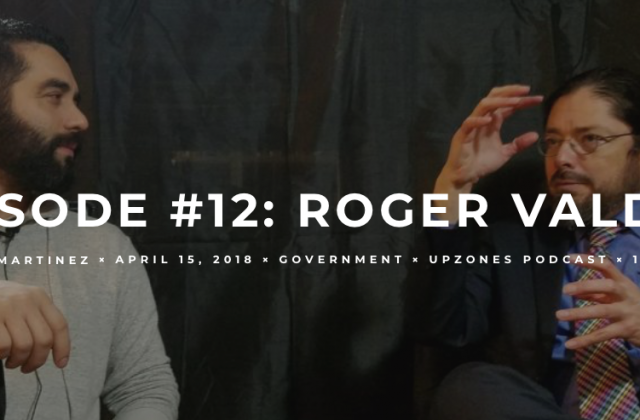MIZ/MHA Won’t Work, but Is there a Compromise?
I was on a panel last week talking about housing and affordability for the University of Washington’s continuing education program for real estate professionals. I was pretty aggressive making my typical points about Mandatory Inclusionary Zoning (MIZ) and the City’s version of it, Mandatory Housing Affordability (MHA). I made the usual points, that MIZ will simply raise all housing prices and produce only a few, expensive units of non-profit affordable housing years from now. I think there was a lot of agreement from the group. But one student asked, “What would it take for you to support MHA?” What a great question. Here’s how I answered and
Cash for Rent
After making the point, again, that the answer to housing prices going up is to make more housing of all kinds in all parts of the city for all levels of income, I gave my opening negotiating position on agreeing to MHA. First, all the money generated from in lieu fees should go to cash payments to relieve the cost burdened for households in the city that have the biggest challenges paying rent, those under 30 percent of Area Median Income (AMI). As I’ve pointed out, by the City’s estimate, there are 26,250 households under 30 percent AMI that are cost burdened and paying as much as half their income on housing. If MHA generated about $75 million a year in fees, that could help each household with an average cash payment of $238 a month for each year.
Sell Density at Auction or Through Negotiation
The only way MHA would be an exchange of value would be if there were an auction for the additional Floor Area Ratio (FAR) that the City wants to charge for. In other words, rather than set a static and arbitrary fee, offer up FAR to the highest bidders or through negotiation. This could be done in general, so a builder could buy FAR from the City and use it where she needed additional density the most, or the City could sell FAR to a specific project for whatever it would be worth at that site. Land values are different in all parts of the city; not every square foot is equal. In some parts of the city, where there is a lot of demand, a developer might be able to pay for additional FAR, absorb the additional risk and costs because it makes financial sense. The current MHA program is a forced sale; you came in to the shoe store to buy one pair of shoes, but the City is going to make you buy a second pair whether you want or need them.
Reduce Regulation: Start with Abolishing Design Review
Finally, I’d get behind a program of voluntary sales of additional density if we abolished the pointless design review program. There isn’t any benefit or value created by design review; the program is purely a speed bump – and sometimes a deal breaker – for new housing. The process is expensive, time consuming, and offers zero or close to zero value for future residents who end up paying more rent to let angry neighbors bicker of the color of the Hardy panel on their building. There are numerous other examples of regulatory overreach, but design review is the most egregious. If we just got rid of it, I’d believe the City was really committed to good housing policy and efficiency. No more design review would save everyone lots of money, time, and aggravation.
So there it is. I’ve been surveying our list of builders to find out what they think, and earlier results show some favor for the idea of lowering cost burdens as part of an exchange of value that would make sense. Many people think a voluntary program would work as well, especially if the price of additional density created more value for a project the way the Multifamily Tax Exemption (MFTE) programs shares the value of a tax deferral with developers and tenants. Of course, if the City was this thoughtful and compromised the program wouldn’t be called Mandatory Housing Affordability anymore. But money would still be generated to help people with rent, more density would happen, and cost control would mean more units coming on line faster and cheaper.
JLARC Study of Why Non-Profit Housing is So Expensive Gets Underway
Well, it’s here. It’s happening. Can you believe it? Yes, the Joint Legislative Audit and Review Committee (JLARC) staff has assembled a research team and has framed the questions it will answer about housing costs in the state. The study will look at what data best gets as the question of how to compare market rate and non-profit housing development. The push back from the non-profit people is that comparing a subsidized project to a market rate project isn’t fair; it’s not an apples to apples comparison, but an apples to oranges comparison. Remember they had it vetoed by Governor Inslee. One thing I have to remind them is that you can compare apples to oranges, they are both fruit after all. They are different, but that’s the point of making a comparison. Once variables can be found across the product types, then JLARC will ask why or if non-profit housing is more expensive and why?
My favorite question is the very last one, what are the cost drivers and what cost controls does the state impose and are there other ones.
I don’t know what JLARC will find. My guess is that the team will discover that all housing production in the state faces different hurdles, the biggest of which is regulation, essentially self imposed limits through taxes, fees, and process. I also think that the team is going to find that this is even more true for non-profit housing. Then we can at least advocate for a reduction of these costs across all housing types. We’ll finally have some numbers to work with. I’ll be heading down to Olympia this morning to hear the Committee talk about the project.
UpZones Podcast: Wide-Ranging Conversation on Housing, Land Use, and More
I had the honor and opportunity to be a guest on another local podcast, UpZones, curated and hosted by Ian Martinez. It really is true that one on one conversation can often be far more productive than bashing things out with a crowd in comments sections online. More than once I’ve been told that in person and one on one, what I am saying makes a lot more sense. It’s just the nature of communication. It’s also the way I write, perhaps with a much sharper edge than when I speak. Martinez points this out in his intro, but it is something that I think about often. We’re not getting anywhere — and I mean the whole conversation — with just pixels and print. Data is crucial to policy development and so is arguing about issues, intensely; but so are the more nuanced aspects of solving problems. UpZones is doing a great job of creating discussion and dialogue to get to that nuance.
Huh? CHS Links MIZ/MHA With Roy Vue Renew
Last week the Capitol Hill Seattle (CHS) blog produced a non-sequitur with a post called, “So you want to save the Royvue?” First of all, the Roy Vue doesn’t need saving. It’s not going anywhere. A proposal is in the works to convert the 90 year old Capitol Hill building from 34 larger units to as many as 100 smaller units. That means the Roy Vue will carry on in all its glory but it will just have room for more people. Our city is growing remember? But emblematic of the narrative static of the City’s efforts to impose the disasterous Mandatory Inclusionary Zoning (MIZ) policy, CHS tries to poach the anxiety of a few dozen neighbors to the benefit of MIZ.
In the post CHS suggests that people worried about changes at the Roy Vue show up at a hearing to cheer lead the MIZ proposal — a tax on the production of all new housing to generate a few subsidized units years from now at the expense of boosting all housing prices to pay the tax — because
But if you really want to push back on an economic market where it makes more sense to convert a well-maintained, popular Capitol Hill apartment building into space for small efficiency dwelling units, you’ll probably want to have something positive to say about making more room for the thousands of people who want and need to move to Seattle. They are coming whether you like it or not.
Huh? First of all, the MIZ scheme is going to make the market worse. The cheer leaders of the proposal and the City acknowledge the upzones granted as part of the proposal are modest, and we know the fees will increase costs that will get passed on to renters. We also know it will only produce a few hundred units a year — maybe — of very expensive subsidized housing. It’s a horrible housing policy and anyone concerned about the current market should be dead set against it; it will make life worse for far more people than it could ever help.
And making room for more people is what the Roy Vue proposal is all about. The building isn’t being gutted, it’s going to be renewed and given another 100 years of life, except in it’s next century it will house far more people, something progressive housing advocates should applaud. And in the comments, people seem to get this notion.
Architectural significance, sure, but the structure is essentially a stack of blocks of rock glued together. Pretty, but quaint. Isn’t it possible that humans might find more economical ways to build a dwelling, and tbat those new types might come to be considered of architectural significance as well?
. . . and . . .
More housing! Keep the Roy facade, and add more units. This keeps the Hill’s street character and houses more people. The best of both issues. I honestly don’t understand why a few select tenants should keep 4-5room apartments simply because . . i actually don’t even know the reason.
So if anything take every opportunity to oppose the MIZ disaster and support renewals and expansion of housing opportunity represented by what’s going to happen at the Roy Vue. More housing opportunity is the welcoming policy we need, not taxing and protesting more supply.
Changing the Housing Trust Fund to the Housing Supply Fund
Yesterday I shared the defensive response from the Department of Commerce which argued that the Housing Trust Fund (HTF) is having statewide impact and that data showing a disparity between rural and urban Washington should be ignored. Don’t worry, the Department says, all that money is going a long way. As they suggest, many rural projects are entirely funded with HTF while urban projects “leverage” many other sources. Looked at another way this suggests that the money is more effectively and efficiently used in rural counties, while in urban areas it is a lengthy and pricey proposition requirement lots of sources of cash, each coming with requirements and limitations.
So what would a Housing Supply Fund look like if it turned the Department of Commerce’s telescope around the right way and used the funds fairly and efficiently to increase housing supply and opportunity in the state. Here’s a very high level take on that idea, updated and repaired (typos in the original). All of this needs digging into, but the basic idea is no more capital expenditure in places like Seattle but, instead, cash subsidies. Counties would get money directly rather than through a process run, in essence, by bureaucrats and non-profits in a figurative “smoke filled room.”
Housing Trust Fund Reform Proposal for the 2019 Legislative Session
- Change the name to the Housing Supply Fund (HSF)
- Block grant funds to county housing authorities
- Base grant allocation based on need demonstrated by,
- Income levels
- Poverty levels
- Vacancy rates
- Age of existing housing stock
- Health status
- Education attainment and literacy
- Funding can be used for the following outside of King County,
- Direct cash rental assistance
- Construction of new housing
- Homeownership assistance
- Rehabilitation of existing, older housing
- H2A housing for Farmworkers
- Teacher housing
- Other worker housing
- Manufactured housing for long or short term use
- Reimbursement for portable vouchers used in King County
- In King County funding may be used only for,
- Direct cash rental assistance
- Homeownership assistance
- Manufactured housing for long or short term use
- Support for people transitioning out of jail or prison
- Support for people transitioning out of jail or prison
- No funds may be used for capital or operating costs
- Statewide funds for
- Expansion of the Earned Release Housing Voucher program
- A risk reduction pool for the benefit of renters leaving the criminal justice system (e.g. deposit insurance, replacement costs, lost rent)
- Creation of a program administered by the Department of Corrections for housing transition for people leaving the all levels (federal, state, and local) of the criminal justice system
- Permanent ongoing quantitative review and audit of the HSF by the Joint Legislative Review and Audit Committee (JLARC)
- Establish and Fund a Farm Labor Housing Authority
- Support a small farmer program to permit and build housing for workers
- Provide technical support for housing financing
- Allocate more tax credits for farm labor housing
- Provide authority to issue bonds
- Develop and build housing for aquacultural workers (e.g. oysters, fishing)






